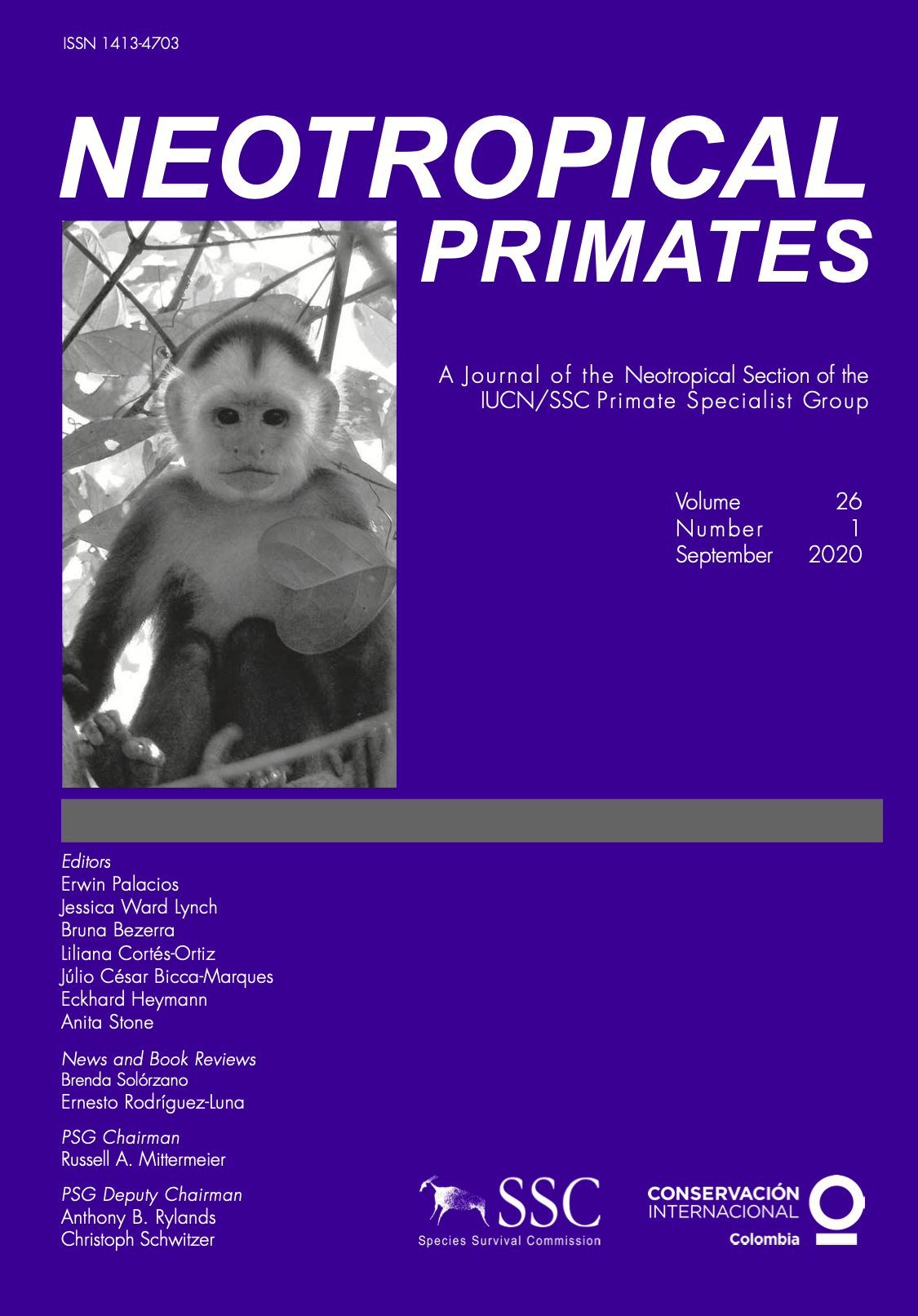Human-monkey interaction dynamics and their dietary impacts on central american white-faced capuchins (Cebus imitator) at Manuel Antonio National Park, Costa Rica
DOI:
https://doi.org/10.62015/np.2020.v26.73Keywords:
Ethnoprimatology, tourism, anthropogenic diet, Cebus capucinus, gracile capuchin monkeysAbstract
Wild capuchin monkeys are highly adaptable to anthropogenic environments. We assessed how the interaction dynamics between humans and three groups of Panamanian white-faced capuchin monkeys (Cebus imitator) in Manuel Antonio National Park, the most visited national park of Costa Rica, affected the feeding behavior and diet of these animals in 2008-2009. On average, individual monkeys acquired 2.4 human food items per focal hour during peak hours of park visitation by humans. Although human visitors directly and indirectly provisioned monkeys in the park, 71 % of monkeys’ acquisition of human food items were a result of monkey-initiated interactions (MIIs) rather than human-initiated interactions (HIIs), and adult male monkeys were the most frequent initiators (with 157 adult male MIIs in the study period, compared to 33 initiated by adult females and 84 by juveniles). Adult male monkeys were also the most likely to make direct contact with humans to grab food (35 of 50 direct grabs of food from humans were by adult male monkeys). Adult females acquired food from humans through HIIs at about the same rate as adult males in their group. Secondary acquisition of human food from other monkeys accounted for about one-third of all events of monkey acquisition of human food, and juvenile monkeys had higher median hourly rates than adults in their group to acquire human food through secondary acquisition. Humans frequently offered fruit when provisioning (61.4 % of provisioning events), but monkeys actively acquired fruit, meat, candy, condiments, chips, crackers and dairy items, and only 36.5 % of MIIs were to acquire fruit. Our results suggest that in parks where humans have frequent contact with capuchin monkeys, park regulations should not only prohibit direct provisioning, but require visitors not to bring food into parks. Stronger measures such as fines or park expulsion for those interacting with monkeys might be more effective, and environmental education is necessary as a strategy to inform visitors what to expect from the monkeys and how to avoid accidental provisioning.

Downloads
Published
Issue
Section
License

This work is licensed under a Creative Commons Attribution-NonCommercial-ShareAlike 4.0 International License.


